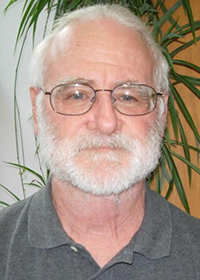Annapolis, MD; August 2, 2021—The Governing Board of the Entomological Society of America (ESA) has elected 10 new Fellows of the Society for 2021. Election as a Fellow of ESA acknowledges outstanding contributions to entomology in research, teaching, extension and outreach, administration, or the military. See more details on criteria for Fellow selection, as well as a full list of ESA Fellows.
This year's honorees will be recognized during ESA's Annual Meeting, Entomology 2021, October 31 - November 3.
The entomologists named 2021 Fellows of the Entomological Society of America are:
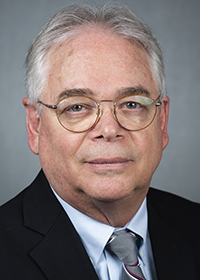 Dr. Jeffrey Bloomquist is a professor in the Entomology and Nematology Department at the University of Florida. Throughout his career, he has specialized in insecticide toxicology with an emphasis on insecticide mode of action.
Dr. Jeffrey Bloomquist is a professor in the Entomology and Nematology Department at the University of Florida. Throughout his career, he has specialized in insecticide toxicology with an emphasis on insecticide mode of action.
Bloomquist was born in 1956 and raised in northwest Indiana. He obtained a B.S. degree from Purdue University (1978), an M.S. from Mississippi State University (1981), and a Ph.D. from the University of California, Riverside (1984), all in entomology. He then served as postdoctoral associate at Cornell University in the laboratory of David Soderlund (1985-1988), studying mammalian toxicology and pharmacology of insecticides. From there, he accepted a position with Rhone-Poulenc AG Company before moving to the Department of Entomology at Virginia Tech. There, he served as assistant professor (1989) and attained the rank of associate professor in 1995 and full professor in 2003. In 2009, he relocated his research group to the Emerging Pathogens Institute at the University of Florida.
Bloomquist has an internationally recognized research program in neurotoxicology, including work on environmental Parkinsonism, as well as insecticide resistance and the search for new molecules for vector control. He produced some of the first papers on the neurophysiological characterization of RDL-type insecticide resistance, and his group documented Parkinsonian effects of insecticides in animal models and established up-regulation of the dopamine transporter as a new biomarker of neurotoxic insult. In 2006, he led a large collaborative project on new synthetic mosquitocides for malaria control under the Grand Challenges in Global Health initiative, and later expanded his research into natural products. New repellent molecules identified by his group include the pyrethroid acids and halogenated aryl amides. Over his career, he served as major professor to 10 M.S. and nine Ph.D. students and supervised 24 postdoctoral scientists, as well as several technicians and 25 undergraduate student researchers. His students and postdocs have received a number of awards and are employed in government, industry, and academic positions worldwide.
Bloomquist has published more than 200 scientific papers (h-index 43) and personally given over 60 invited research presentations. He served as executive editor for Pest Management Science and as a member of the USEPA FIFRA Scientific Advisory Panel and External Scientific Advisory Committee of the Innovative Vector Control Consortium. Awards for his research accomplishments include the Innovation Award in the Chemistry of Agriculture from the American Chemical Society (2021), ESA Southeastern Branch Recognition Award in Insect Physiology, Biochemistry, and Toxicology (2019), University of Florida Term (2018-2020) and Research Foundation (2019-2021) professorships, American Chemical Society International Award for Agrochemicals (2017), the John V. Osmun Alumni Professional Achievement Award in Entomology, Purdue University (2009), and 17th Paul Dahm Memorial Lecture (Iowa State University). He also received several awards from Virginia Tech, including Fralin Institute Senior Faculty Fellow (2009), College of Agriculture and Life Sciences Award for Research Excellence (2006), and the Gamma Sigma Delta Research Award of Merit (2000).
In 1985, Bloomquist married Dr. Judy Mollet, and they have two sons. In his spare time, he enjoys wine tasting and gardening, and he is an avid angler in both fresh and saltwater.
Dr. Galen P. Dively, emeritus professor of entomology at the University of Maryland, is widely recognized for his work in agricultural integrated pest management (IPM), resistance monitoring, and ecological assessment of the nontarget effects of Bt crops.
Dively was born in Claysburg, Pennsylvania, in 1944 and grew up on a dairy farm. He received his B.S. in biology (1966) from Juniata College and earned his M.S. (1968) and Ph.D. (1974) in entomology from Rutgers University. Dively joined the University of Maryland faculty in 1972 and worked as an extension IPM specialist for 34 years. In this role, he served as the state IPM coordinator, implemented pilot demonstration projects, trained crop advisors, delivered weekly IPM information, and gave over 600 talks at stakeholder meetings. His outreach efforts resulted in a significant shift to prescription-based insecticide use in many crops, and his vegetable IPM guidelines have been adopted in other states.
Dively’s research is broadly focused and closely linked to his extension efforts to address IPM issues. His laboratory provided long-term bioassay services to establish baseline susceptibility levels and monitoring for tracking resistance development to neonicotinoid and diamide insecticides in Colorado potato beetle populations. His research generated nontarget information required for continued registration of Bt corn, reported the first evidence of insect resistance to Bt sweet corn, and demonstrated benefits to vegetable growers from regional pest suppression associated with widespread Bt corn adoption. He organized and served on several working groups to develop field and laboratory protocols for testing nontarget effects. Dively was part of a research team that assessed the nontarget impact of Bt corn on the monarch butterfly, which significantly influenced EPA’s decision process regarding re-registration of Bt corn. His nontarget work also focused on the effects of Bt pollen and imidacloprid on honey bee colony health.
Since retirement in 2006, Dively continues to maintain an active teaching/research program as a part-time faculty member. He teaches an online IPM course each spring semester, evaluates new conventional and organic insecticides, and has published multiple studies on the benefits of insectary flowers in riparian buffers and on the biology and management of the invasive brown marmorated stink bug. Most recently, he developed and directs a multistate sweet corn sentinel monitoring network for tracking field-evolved resistance to the Bt toxins, which has influenced EPA to consider changes to the insect resistance monitoring protocol for Bt crops.
During his 48-year career, Dively mentored 36 graduate students; generated more than $7 million in competitive funding; and published 99 peer-reviewed papers (6,126 citations), five book-chapters, 77 extension leaflets and bulletins, and over 200 technical research reports. His accomplishments are recognized by the University of Maryland Faculty Award in Extension (1992), Eastern Branch Distinguished Achievement Award in Extension (1993), Eastern Branch Recognition Award in Entomology (2001), Life Sciences Faculty Service Award (2003), and Eastern Branch L.O. Howard Distinguished Achievement Award (2010).
He continues to live an active life, gardening, woodworking, fishing, sailing, and world traveling with family.

Dr. Sunday Ekesi is an entomologist, research for development (R4D) scientist, and leader with extensive knowledge and experience in sustainable agriculture and biodiversity in Africa and internationally. His dedication and innovation in this field have been successful at multiple levels, transforming and facilitating growth in the horticulture industry, biopesticide use, controlling invasive and migrant pests, utilizing insects for food and feed, resource mobilization, improving food and nutrition security, and empowering and networking people to improve their well-being.
Ekesi was born in Gboko, Nigeria, in 1967. He received his B.S. in zoology in 1989 from University of Jos, Nigeria, and M.S. in applied entomology and parasitology from the same university in 1992. He obtained his Ph.D. in crop protection from Ahmadu Bello University (ABU), Nigeria, in 1999. Ekesi began his career in entomology as lecturer at ABU in 1992 in the Department of Crop Protection. In 1999, he joined the International Centre of Insect Physiology and Ecology (icipe), Nairobi, Kenya, as a postdoctoral fellow. In 2003 he moved to Rothamsted Research, UK, as an international fellow. He returned to icipe in 2004 as a research scientist and later became the head, plant health theme (2005-2011, 2013-2018). He is currently the director of research and partnerships (2016-present) at icipe and a member of the Senior Management Committee.
As director of research and partnerships, Ekesi manages and provides science governance and leadership on high-level strategic research goals of the institution. He has been leading a continent-wide initiative to manage fruit flies in Africa. Ekesi and his team have successfully developed pre- and post-harvest management methods for fruit flies that meet the demands of domestic and quarantine-sensitive export markets and increase net income of smallholder farmers. He has developed several biopesticides for use in IPM. Most recently, he has been working in the field of utilizing insects as alternative sources of protein for food and feed, leading to the development of standards for commercial insect products.
He has published more than 250 peer-reviewed articles in scientific journals and given over 150 presentations at scientific gatherings. Ekesi has mentored 17 Ph.D. and M.S. students and seven postdoctoral fellows. He has won over 48 funded proposals (more than U.S. $53 million). He is an enthusiastic member of ESA, Society for Invertebrate Pathology, and African Association of Insect Scientists. He is a Fellow of the Entomological Society of America (FESA), Royal Entomological Society (FRES)-UK, and African Academy of Sciences (FAAS) and has won several awards. He serves on several advisory boards including the 1890 Universities Center of Excellence for Global Food Security and Defense, University of Maryland Eastern Shore; Australia GRDC Fall Armyworm Preparedness and Control International Liaison Group; FAO Global Action for Fall Armyworm Control; and USAID Virginia Tech IPM Innovation Lab, among others. He provides advisory services to several African governments, IAEA, and FAO, on various programs on agriculture, health, biodiversity, and climate change.
Ekesi has been married to his wife, Ruth, for more than 22 years, and they are the parents of three children (Gabriel, Faith, and Elvina).
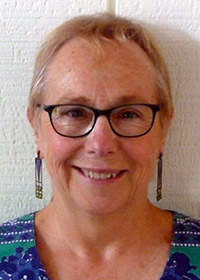
Dr. Kelli Hoover, professor in the Department of Entomology at Pennsylvania State University (PSU), is a member of the Centers for Chemical Ecology and Pollinator Research as well as the Insect Biodiversity Center. She is internationally recognized for her research on invasive species biology and ecology, especially for the discovery of mechanisms underlying multitrophic interactions between host plants, insects, and insect pathogens or symbionts.
Hoover was born in Lubbock, Texas, but raised in the south San Francisco Bay Area, where she received her B.S. in biology of natural resources in 1979 from the University of California (UC), Berkeley. After graduation she worked as a biological technician for the U.S. Forest Service in Juneau, Alaska. In 1987, she obtained a second B.S. in physical therapy from the University of Washington and worked for five years as a sports medicine physical therapist, but her passion for insects prompted her to return to graduate school. She obtained her M.S. in biology at San Jose State University in 1992 and her Ph.D. in entomology from UC Davis in 1997. After a year as a President’s Postdoctoral Fellow at UC Berkeley, she joined the faculty in the Department of Entomology at PSU in 1998.
Hoover’s research program spans the foundational to the translational and includes plant-insect-entomopathogen and microbial symbiont interactions, primarily focused on invasive species. She investigates how plant defenses impact the physiology of pathogenesis of baculoviruses in caterpillar hosts and the host insect’s immune system. She also studies the complex interactions between insects, their gut symbionts, and host plants in beetle and lepidopteran systems, including effects on plant defense expression and insect fitness. She is currently elucidating the physiological impacts of spotted lanternfly on hardwood tree health and growth.
Hoover has trained more than 30 graduate students and postdoctoral fellows and published over 120 peer-reviewed papers and book chapters (five in PNAS and one in Science), and she holds two patents. She has taught 10 different entomology courses and co-developed the popular general education course “The Insect Connection: Insects, Globalization, and Sustainability,” which is taught online and in the classroom every semester, reaching thousands of undergraduates.
Hoover has been honored with the two Penn State College of Agricultural Sciences teaching awards and the Black Award for Excellence in Research. She is a member of the Science Steering Committee for the International Forestry Quarantine Research Group, which advises the Technical Panel on Forest Quarantine of the International Plant Protection Convention on the science behind regulations to protect living trees from pests moving in wood.
Hoover has been a member of ESA since 1996 and served as a judge for student competitions at 10 national meetings. She has organized numerous symposia for national and branch meetings and served as a subject editor for Environmental Entomology. Hoover was the chair or co-chair of the organizing committees for three annual meetings of the International Society for Invertebrate Pathology and served four years as treasurer.

Dr. Casey W. Hoy is a professor of entomology, held the Kellogg Endowed Chair in Agricultural Ecosystems Management from 2006 to 2021, and served as the inaugural faculty director of the Initiative for Food and AgriCultural Transformation at The Ohio State University, 2015-2021. He is internationally known for his systems approach to research on improved pest management, agroecosystems management, food systems, and food security.
Hoy was born in Ohio and grew up in the woods, fields, and waters of Ohio, Connecticut, and Maryland. He holds both B.S., with Distinction and Honors, and Ph.D. degrees in entomology from Cornell University. He joined the Department of Entomology at The Ohio State University, Ohio Agricultural Research and Development Center (OARDC), in Wooster, Ohio, in 1987.
Hoy’s research has included systems analysis and its application to integrated pest management and applied ecology. He contributed to chemical, cultural, and biological control measures for insect pests of vegetable crops. More fundamental research highlights include quantitative ecology and particularly spatial dynamics of insects, including the quantitative genetics of behavioral response to toxins and how they shape selection for physiological tolerance and insecticide resistance, areawide management of highly mobile plant disease vectors, and conservation biological control by entomopathogenic nematodes. He has published over 170 papers, book chapters, and technical reports.
Hoy served as the associate chair of the Department of Entomology from 2001 to 2006. As the Kellogg Endowed Chair in Agricultural Ecosystems Management, he led the Agroecosystems Management Program in interdisciplinary research, teaching, and outreach with Ohio State colleagues and extramural partners to advance the science of agroecosystem management, develop statewide sustainable agriculture curricula, and provide leadership in sustainable agriculture extension. As a campus leader in sustainability and interdisciplinary research, Hoy coordinated a proposal among 50 faculty colleagues to establish the Discovery Themes Initiative for Food and AgriCultural Transformation, InFACT, an investment by Ohio State of over $50 million in resilient and sustainable food security. As faculty director for InFACT, Hoy has partnered with 18 departments in seven Ohio State colleges to hire a diverse group of faculty and has led a distinguished team of over 150 faculty members from across The Ohio State University, along with over 170 partnering organizations beyond Ohio State, in a systemic, comprehensive, and transformative approach to achieving global food security.
Hoy previously received the OARDC Multidisciplinary Team Research Award, OARDC Distinguished Faculty Research Award, and ESA Award for Excellence in Integrated Pest Management. He has served as a panelist or panel manager 19 times for USDA research programs, served on the Ohio Food Policy Advisory Council and several nonprofit boards, and was a co-founder of the WK Kellogg Foundation endowed Inter-Institutional Network for Food, Agriculture, and Sustainability.
Hoy and wife Karen Skubik are the parents of two adult Hoy-Skubiks, Briana and Sean. Less analytical activities include soccer, skiing, brewing beer, and playing Irish music (fiddle, banjo, low D whistle) in pub sessions.
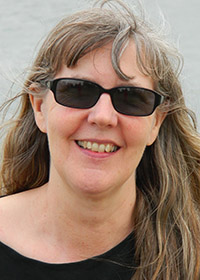
Dr. Martha (Molly) Hunter is a professor in the Department of Entomology and in the Department of Ecology & Evolutionary Biology at the University of Arizona. She also serves as the chair of the Graduate Interdisciplinary Program in Entomology & Insect Science. She is known for her work on the ecology and evolution of insects, particularly with respect to insect interactions with bacterial symbionts.
Hunter was born in Hanover, New Hampshire, and went to Brown University, where she received a B.A. in biology in 1980. She attended graduate school at Cornell University in the Department of Entomology, where she received her M.S. in 1987 and her Ph.D. in 1991. She received a NATO Postdoctoral Fellowship and an NSF Fellowship for her first postdoctoral appointment with Charles Godfray at Silwood Park, Imperial College, in Berkshire, UK. She then did a second postdoctoral appointment at Texas A&M, working with Jim Woolley, Bob Wharton, and Mike Rose. She moved to the University of Arizona as an assistant professor in 1996.
Hunter is internationally known for her study of how bacterial symbionts influence herbivores, parasitoids, and the parasitoid-host interaction. A general finding is that symbionts may radically change the biology and behavior of their insect hosts. Hunter led the team discovering and characterizing the intracellular bacterial symbiont Cardinium hertigii, which manipulates the reproduction of its arthropod hosts. They found that Cardinium caused the mating incompatibility known as cytoplasmic incompatibility and parthenogenesis-induction in whitefly parasitoids, two roles previously thought to be uniquely associated with Wolbachia. Cardinium also influences the behavior of parthenogenetic wasps, changing their host choice. In collaboration with Nancy Moran, and led by Ph.D. student Kerry Oliver, Hunter and colleagues discovered a beneficial defensive role of facultative symbionts with studies of pea aphid symbionts that conferred protection against parasitoid wasps. In collaboration with Einat Zchori-Fein, Hunter documented the rapid spread, the eventual decline, and the transformational effects on fitness of a Rickettsia species in a sap-feeding whitefly pest, the invasive Bemisia tabaci.
Hunter has published 85 peer-reviewed research articles, collectively cited more than 7,300 times, with 18 papers cited more than 100 times each. She has been funded by NSF, USDA National Institute of Food and Agriculture, the Binational (US-Israel) Science Foundation, and US-Israel Binational Agriculture Research and Development (BARD). She is a Fellow of the American Association for the Advancement of Science and of the Japan Society for the Promotion of Science, and she has given 58 invited presentations in 12 countries. She has received awards for mentoring and teaching from both the College of Agriculture and LIfe Sciences at the University of Arizona and the Pacific Branch of ESA.
Hunter and her husband Mark Lochrin live in Tucson, Arizona, where their son Rowan lives nearby and is a software engineer. She enjoys the outdoors and travel, especially to Sydney, Australia, where Lochrin was born, and to New England.
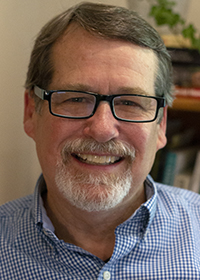 Dr. William D. Hutchison, professor and extension entomologist in the Department of Entomology, University of Minnesota (UMN), is internationally recognized for the development of sustainable integrated pest management (IPM) programs in horticultural and field crops. His research on endemic and invasive insect species emphasizes early pest detection, statistically sound sampling, resistance management, and the areawide assessment of genetically engineered (GE) crops on pest dynamics and economic benefits, particularly to non-GE crops.
Dr. William D. Hutchison, professor and extension entomologist in the Department of Entomology, University of Minnesota (UMN), is internationally recognized for the development of sustainable integrated pest management (IPM) programs in horticultural and field crops. His research on endemic and invasive insect species emphasizes early pest detection, statistically sound sampling, resistance management, and the areawide assessment of genetically engineered (GE) crops on pest dynamics and economic benefits, particularly to non-GE crops.
Hutchison was born in Tucson, Arizona, and as an undergraduate had the opportunity to help implement one of the first areawide mating disruption programs in the United States, for pink bollworm control. He received his B.S. degree in agronomy at the University of Arizona (1977), M.S. in entomology at Mississippi State University (1980), and Ph.D. in entomology from the University of Wisconsin-Madison (1984). Following graduation, he was hired as a research entomologist, USDA-ARS, in Phoenix. In 1989, he accepted an offer as assistant professor of entomology at UMN and was promoted to professor in 2000. He served as department head from 2010 to 2015, and as coordinator of the Minnesota Extension IPM Program from 2015 to 2020. He is also an adjunct professor of entomology at the University of Nebraska.
Throughout his career, Hutchison focused on applied ecology as a foundation for developing sustainable IPM strategies. His initial emphasis was European corn borer (ECB) and corn earworm (CEW) in sweet corn. In 1995, he conducted the first efficacy trials of genetically engineered Bt sweet corn in the Midwest. The research was timely, as his team also documented pyrethroid resistance in CEW—creating a renewed emphasis on insect resistance management (IRM). With the advent of Bt corn, and the NC-246 multistate research group, Hutchison co-led discussions among researchers, extension, and industry to develop the first consensus, High-Dose-Refuge IRM strategy for Bt corn (1997). These collaborations led to a landmark paper assessing the economic benefits of Bt corn (five states) and was published in Science. The study documented a cumulative benefit of $6.9 billion (1996-2009), with 62 percent of the revenue accruing to non-Bt corn (refuge) growers—an economic incentive for IRM. The benefit to those planting non-Bt corn occurred because of the areawide ECB suppression effect ("Halo effect") and absence of Bt technology fees for non-Bt corn. To improve Bt resistance monitoring, he conceived the idea of using Bt sweet corn as an "in-field screen," or as sentinel plots, now widely used by colleagues in the United States (more than 20 states) and Canada. Beyond Bt, he addressed the increasing frequency of invasive species in Minnesota agriculture, to develop additional IPM solutions such as exclusion netting to substantially reduce insecticide use.
Hutchison's research, with graduate students and colleagues, includes 170 journal articles, 21 book chapters, and numerous extension publications (with more than 8,300 citations). His research has been featured by AP, NPR, The LA Times, and The Guardian (UK). A member of ESA since 1978, he served in many capacities, including co-editor for the Journal of Economic Entomology (1994-1996) and as president of the Plant-Insect Ecosystems (P-IE) Section. He also serves on the editorial boards for GM Crops & Food, Crop Protection,and Insects. In 2020, he was invited to serve as Co-Chief Editor for the Invasive Species section of a new journal, Frontiers in Insect Science. Previous awards include ESA's Distinguished Extension Award (1997), the Entomological Foundation's IPM Team Award (2011), P-IE Recognition Award (2018), and the ESA Award for Excellence in IPM (2020).
Hutchison is married to Margo, and they have two grown children, Luke and Ellie. When not chasing bugs, he enjoys hiking the Minnesota North Shore, kayaking, and travel.
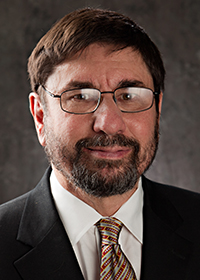
Dr. Conrad C. Labandeira is senior research scientist and curator of fossil arthropods in the Department of Paleobiology at the Smithsonian Institution’s National Museum of Natural History (NMNH) in Washington, D.C. Labandeira is a paleoecologist internationally known for his work on insect fossil history and their ecological relationships with other organisms, particularly plants, and how insects have responded to major biotic and abiotic events of the deep past.
Labandeira was born in Hanford, California, and grew up on a small farm near Fresno. His early years were spent attending to his family’s ranch that initially supported cattle, and later crops such as cotton, alfalfa, maize, and wine grapes. He was a drywall finisher, a trade used to put himself through school. He received a B.A. in biology, geology, and anthropology from California State University Fresno in 1980. For his M.S., he attended the University of Wisconsin Milwaukee from 1980 to 1982, where he completed a thesis on Cambrian trilobite systematics. He attended the University of Chicago from 1983 to 1989, where he completed a dissertation on a phenetic analysis of modern insect mouthpart structure and their representation in the fossil record. Postdoctoral research at the University of Illinois Urbana–Champaign, from 1989 to 1992, involved examination of arthropod feeding damage and fecal pellets in exquisitely preserved 315 to 300 million-year-old coal-ball floras from the Illinois Basin. Labandeira joined the NMNH Department of Paleobiology in 1992 and was chair from 2007 to 2010.
Labandeira, with colleagues, has published 183 peer-reviewed and 23 non-peer-reviewed papers on the systematics, ecology, diversity, functional morphology, and food webs of fossil arthropods, principally insects. Perhaps his best noted work is fossil plant–insect interactions, focusing his efforts on herbivory, pollination, and mimicry. His early career examined detritivory, herbivory, and pollination of Paleozoic arthropods on mostly spore-bearing, coal-swamp floras, and later on mesic seed-plant floras occupying sediment substrates. Recently, he studied the effects that a transition from a gymnosperm-dominated to angiosperm-dominated global flora had on pollinating insects.
While at NMNH, Labandeira presented 244 oral presentations on his research at universities, museums, meetings, symposia, and other academic venues. He became Fellow of the Geological Society of America (2017) and the Paleontological Society (2014). With coauthors, he was awarded the year’s best paper from the Society of Sedimentary Geology in Palaios (1997); from NMNH in Proceedings of the National Academy of Sciences USA (2009), Ecological Monographs (2010), Naturwissenschaften (2013), Proceedings of the Royal Society B (2016), and Nature Communications (2019); and from the Natural Science Award of Yunnan Province of China in Nature Communications (2017). He mentored and advised seven undergraduate students (senior theses), five master’s students, 20 doctoral students, and four postdoctoral students. He was a member of an ESA advisory board that interviewed editorship candidates for the new journal, Insect Systematics and Diversity. He is also subject matter editor for Ecology, Ecosphere, Palaeontology, and Palaios.
Labandeira lives in Arlington, Virginia, with his wife, Maria, and son, Robert, who is engaged in film studies and the dramatic arts.

Dr. Andrew (“Sandy”) Liebhold, a research entomologist with the U.S. Forest Service is internationally recognized for his work on the population ecology of forest insects, and in particular his work on the ecology of insect invasions.
Liebhold grew up in Santa Barbara, California, and Bethesda, Maryland, and had a childhood fascination with forests and nature. His pursuit of entomology began while working as a summer intern in a USDA honey bee laboratory in Beltsville, Maryland, as a high school student. He received his B.S. in biology from Allegheny College in 1978 and his Ph.D. in entomology from the University of California, Berkeley. From 1984 to 1988, Liebhold worked on Lymantria dispar population ecology as a postdoctoral with Joseph Elkinton at the University of Massachusetts. In 1988 he began his current position as a scientist with the USDA Forest Service Northern Research Station in Morgantown, West Virginia. Currently, Liebhold is also partially affiliated with the Forest Service Rocky Mountain Research Station in Ft. Collins, Colorado. Additionally, he serves as a research leader at the Czech University of Life Sciences in Prague, Czech Republic, where he leads an insect invasion research group. During the course of his career, Liebhold has served as an officer and conference organizer with the International Union of Forest Research Organizations (IUFRO). He has also organized and led several interdisciplinary scientific working groups focusing on various aspects of invasion ecology at the National Center for Ecological Analysis and Synthesis and the National Socio-Environmental Synthesis Center.
Liebhold’s research focuses on the ecology of forest insects. Part of his work focuses on understanding the population processes responsible for spatiotemporal patterns of insect outbreaks, but a larger part of his research focuses on the ecology and management of biological invasions. Liebhold’s work has provided new insight to the invasion pathways responsible for the global spread of non-native insect species and the socioeconomic factors driving those invasions. His work has yielded a new understanding of population processes operating during the establishment phase of invasions and new strategies for applying this information in surveillance, eradication, and barrier zone projects. Liebhold’s research has provided an improved understanding of how forest insect invasions alter forest ecosystems across large landscapes. Much of his current work focuses on understanding ecological and socioeconomic drivers of the biogeographic patterns of global insect invasions.
Liebhold has published over 270 papers in peer-reviewed journals and currently serves on the editorial boards for the journals Population Ecology and Biological Invasions. He was elected a Fellow of the American Association for the Advancement of Science in 2015 and was awarded the Scientific Achievement Award from IUFRO in 2010 and the Lifetime Achievement Award from the National Gypsy Moth Management Board in 2011. He is adjunct faculty in the West Virginia University Department of Geology and Geography and a research associate of the Carnegie Museum.
Liebhold is married to Genevieve Bardwell (retired baker) and they have two daughters, Katy Ryan (legal assistant, Ft. Collins, Colorado) and Naomi Liebhold (educator, Bellingham, Washington).
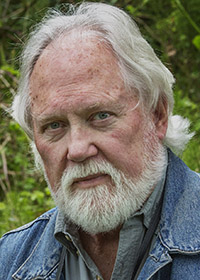
Dr. Robert Michael Pyle, independent scholar, writer, biologist, and educator, is internationally honored for his devotion to insect conservation (particularly as founder of the Xerces Society), promoting public awareness and enjoyment of butterflies, and contributions to natural history and place-based literature.
Born in Denver, Colorado, in 1947, Pyle attended Aurora Public Schools. His first grant, in high school, was from the Colorado-Wyoming Academy of Science for wood nymph (Cercyonis) studies. Meeting Charles Remington, Paul Ehrlich, John A. Comstock, and other prominent lepidopterists as a boy was a tremendous influence on his future studies. He took his B.S. (nature perception and protection, 1969) and M.S. (nature interpretation, 1973) at the University of Washington. After a Fulbright scholarship in butterfly conservation with John Heath at Monks Wood Experimental Station, Abbots Ripton, UK, he joined Remington at Yale University for his Ph.D. on “The Eco-Geography of Lepidoptera Conservation” (1976). Thereafter he was giant birdwing conservation consultant for the Wildlife Division of Papua New Guinea; Northwest land steward for The Nature Conservancy; and co-manager and invertebrate red data book compiler at the Species Conservation Monitoring Center at Cambridge University. In 1982 he became independent. He has been a visiting professor at Utah State University, The Evergreen State College, and the University of Montana.
Pyle’s Watching Washington Butterflies and Handbook for Butterfly Watchers were the first American books promoting butterfly watching alongside collecting, an activity now developed far beyond his dreams. His Audubon Society Field Guide to the Butterflies of North America, still in print and widely used after 40 years, was the first to cover the entire fauna and to use photographs from life. He is best known for founding the Xerces Society for Invertebrate Conservation in 1971. Xerces now has a staff of more than 50, some prominent entomologists among them, and is the largest pollinator protection team in the world. With Remington and Sarah Hughes, Pyle initiated the annual butterfly counts that thousands now undertake. He was the first to attempt to follow the monarch migration, reported in Chasing Monarchs and papers with Lincoln Brower, demonstrating a new model for the migration. Pyle’s several hundred publications include 27 refereed papers and major reports and two Annual Review articles. His 25 books include Wintergreen, The Thunder Tree, Mariposa Road, Nature Matrix (finalist for the 2021 PEN America Award for the Art of the Essay); five collections of poetry; the novel Magdalena Mountain; and Butterflies of the Pacific Northwest.
An Honorary Fellow of the Royal Entomological Society and 62-year member of the Lepidopterists’ Society, Pyle has received a Guggenheim Fellowship, the John Burroughs Medal, two National Outdoor Book Awards, and a Distinguished Service Award from the Society of Conservation Biology. He has described nine new taxa of butterflies and has one patronym, a myriapod.
In the absence of his late beloved wife Thea Linnaea, Pyle continues to read, write, track butterflies, and study the natural history of his rainforest enclave in the Willapa Hills of southwest Washington.
CONTACT: Joe Rominiecki, jrominiecki@entsoc.org, 301-731-4535 x3009
ABOUT: ESA is the largest organization in the world serving the professional and scientific needs of entomologists and people in related disciplines. Founded in 1889, ESA today has more than 7,000 members affiliated with educational institutions, health agencies, private industry, and government. Headquartered in Annapolis, Maryland, the Society stands ready as a non-partisan scientific and educational resource for all insect-related topics. For more information, visit www.entsoc.org.

